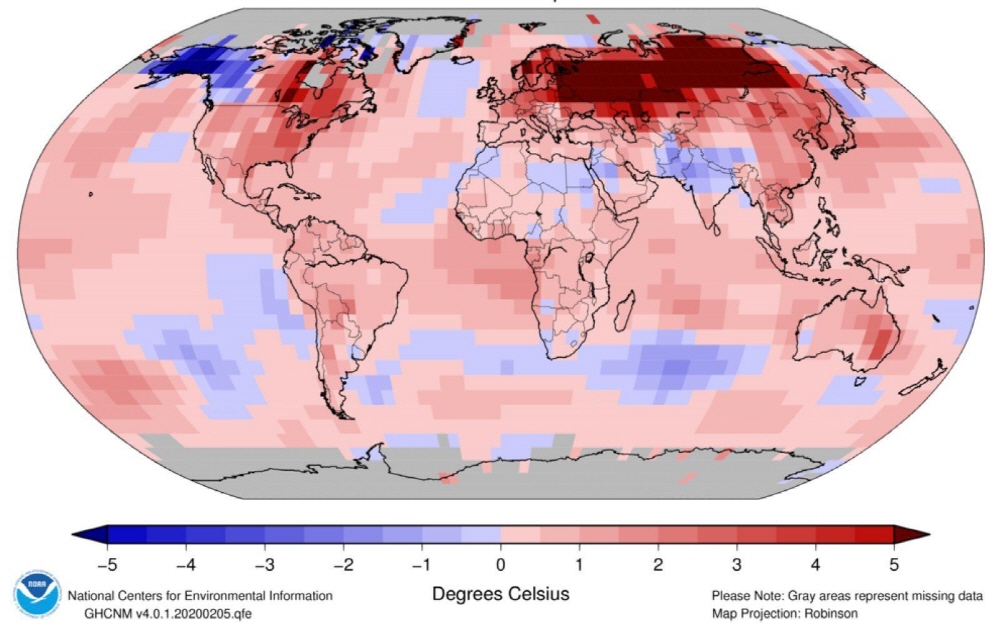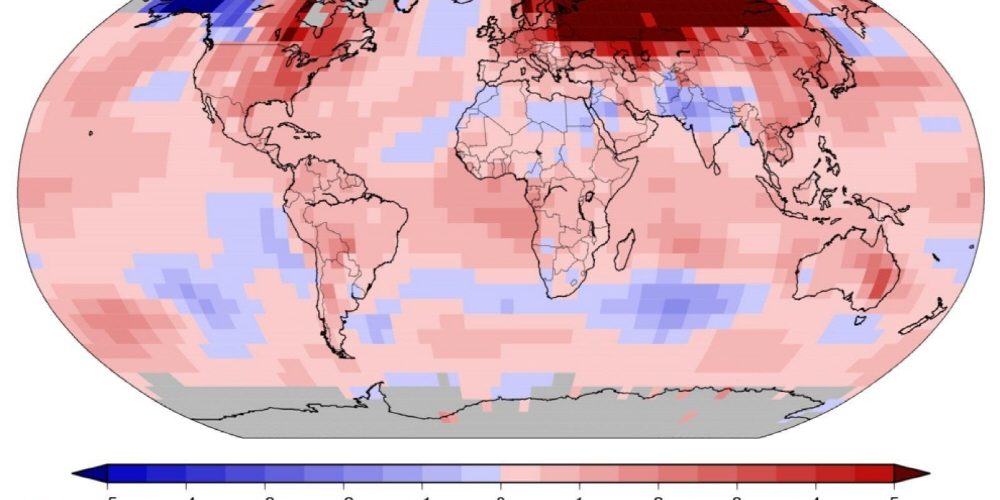
According to the US Oceanic and Atmospheric Administration NOAA’s Environmental Information Center, January 2020 was the warmest January so far, according to observations over the past 141 years.
Global land and ocean surface temperatures in January rose 1.14 degrees above the average temperature of the 20th century, and the record high in January 2016 was also 0.02 degrees higher. In particular, the temperature rise above average was 5 degrees higher than average in Russia, Scandinavia, and parts of eastern Canada, while temperatures fell in Alaska and western Canada.
It is said that 2019 was the second warmest year on record. Considering that June 2019 is the hottest June ever, and it hit 18.3 degrees in Antarctica on February 6, 2020, it may not be surprising that January 2020 is the warmest month ever. According to NOAA, all the warmest January ranking TOP10s in the past have been located since 2002.
It’s no longer surprising, but it’s not a good thing because it’s insensitive. According to the research team, global warming is progressing faster than previously predicted. In the current state, human life is already in the industrial revolution. ○ There are reports that it is difficult to achieve the Paris Agreement, which aims to curb the global average temperature rise to less than 1.5 degrees Celsius. According to the report, rising temperatures could melt 5.18 million km2 of permafrost in the Arctic, destroy 70% of sea coral reefs, and expose 14% of the world’s people to heat hazards. Related information can be found here .


















Add comment